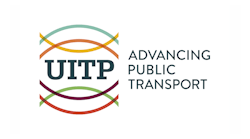The International Association of Public Transport has welcomed these newcomers — such as Door2Door, Citymapper, Uber, Moovel, Via, Grab, Ola, Yandex, 99 and Upstream — as part of its membership, reflecting the rapidly changing urban mobility sector.
As an association firmly aimed at leading the mobility transition, UITP has decided to create a new subsection in its membership called “Digital Platforms” — which will include players offering access to services or assets such as trip planning tools or ride sharing via the internet.
These digital players, who have a role to play in a sustainable urban mobility solution, will in practice be able to work together with existing UITP members on topics such as digitization, sustainable development or combined mobility among others.
Complementing public transport
Customer satisfaction is paramount. Public transport, particularly in densely utilized urban areas and during peak hours, is the only viable solution for cities. However providing efficient public transport when demand is low has proven to be challenging: this is exactly where new mobility options can step in.
“Alone these new players do not have the capacity or capability to meet every journey need or solve congestion issues. They therefore need to operate to complement existing high quality public transport” said UITP Secretary General Alain Flausch.
An integrated combination of sustainable mobility services is the key to cutting urban car dependency. Urban space is one of the most precious resources in a city and private cars are parked 95 percent of their lifetime, taking up space that could be reallocated to different uses - such as green areas, businesses, housing and more.
Who are these new players?
“The advent of the smartphone launched an unprecedented emergence of new players, whose influence is extending to all facets of the public transport market and digitization is promising to propel the industry further,” Alain Flausch continued.
Mobile broadband, location detection, smartphone penetration and social media are enabling new services to develop. The internet has enabled the emergence of platform business models, which allow users to create and consume value.
Such platforms provide access to services (trip planning, travel information, booking, ticketing, a ride with a driver…) or to assets (cars, mini-buses or bicycles…) that are typically only accessible via Internet.
UITP’s new membership subsection category will therefore include online digital platforms that facilitate access to services or assets via connections that are (a) service(s) and/or asset(s) via a B2B (business to business), B2C (business to customer) or P2P (peer to peer) connection. A service could be travel information, booking, ticketing or a ride with a driver and an asset could be cars, parking space etc - typically the services are only accessible via the internet.

